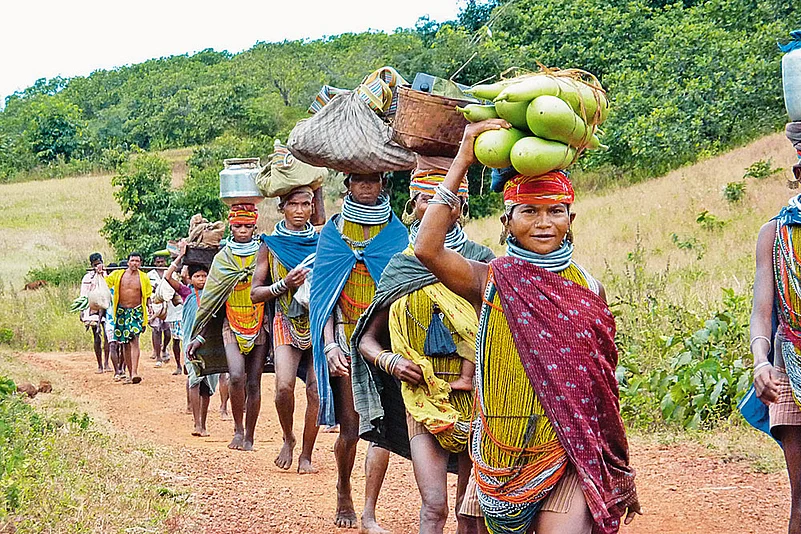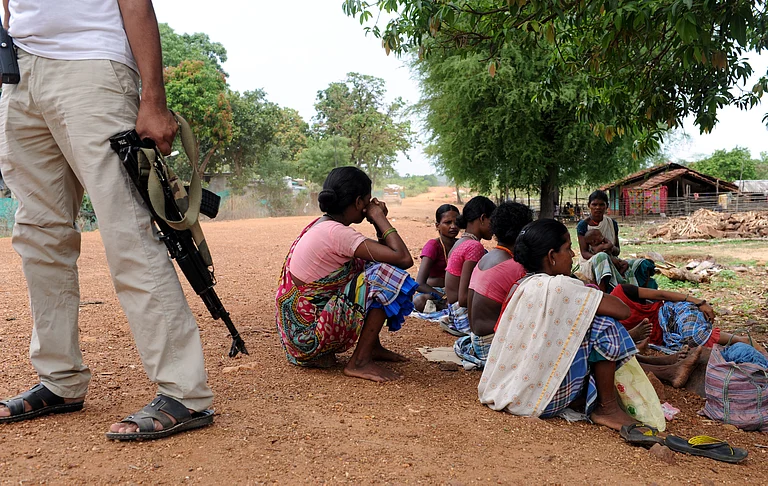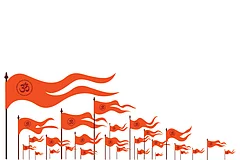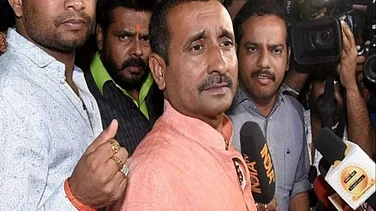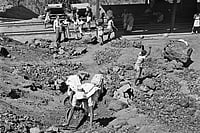Forced to Change
We have lived Adivasiyat since our childhood. This is the ideology of Adivasi society, which is based on nature’s laws, and is casteless, classless and discrimination-free. It teaches need-based economic organisation, self-rule based on unanimity, and development centred on community and nature. But today, Adivasiyat is on its death bed.
I understood the value of Adivasiyat after leaving home at 16. Today, it is clear to me how organised religion, political ideology, capitalist economy, modern education, consumerism, technology and human-centred development have all worked to annihilate Adivasiyat.First, our ancestors were termed uncivilised, savage, etc. Then, we were called illiterate, uncultured, backward, etc. The Britishers tried to ‘civilise’ us.
First, our ancestors were termed uncivilised, savage, etc. Then, we were called illiterate, uncultured, backward, etc. The Britishers tried to ‘civilise’ us. After India’s Independence, we have been continuously displaced from our land and natural resources in the name of development. I myself lost my ancestral land to an irrigation scheme.
In the name of bringing us into the mainstream, central and state governments have worked to destroy the Adivasi world and society. Adivasi society has been portrayed as a pile of garbage. As a result of this trap of civilising themselves, entering the mainstream and being deemed as developed, Adivasis kept getting separated from Adivasiyat itself. Urban-dwelling Adivasis were getting disconnected from their core Adivasi identity, language, culture, traditions and beliefs; Adivasis in rural areas kept being displaced from their homes and land. All this has been done deliberately to cut us off from our roots.
The Results of Integration
Communitarianism of Adivasi society, which shook the foundations of British rule, has been poisoned with communalism today. Adivasis are fighting each other. The attempt to divide Adivasi society in the name of religious conversion, delisting , and benefitting from reservations has been very successful. I have been relentlessly fighting for Adivasi identity and culture, and Adivasis’ right to ownership of our land and natural resources. But even my own people have been looking at me through the lens of religion. My religious identity has been deliberately magnified.
You will not find words for “sexual harassment” and “rape” in any Adivasi language, as everyone in the community lives together and remains protected. But now, all the crimes of the outside world are reflected in Adivasi society. This is the result of integrating Adivasi society into the mainstream.
Adivasi Movements
The lives of Adivasi people are heavily impacted by climate change. The industrialisation, mining and urbanisation taking place across the world just to fulfill the greed of the so-called civilised people have played havoc on earth. Not only are the resources for their livelihood being destroyed, they are also forced to depend on government schemes, daily wage labour and domestic work. Ninety per cent Adivasis still live in villages. Their livelihood depends primarily on farming and forest produce. However, the impact of climate change on forest produce and farming has made this very difficult. It has led to rapid migration from rural areas. It is this situation that brokers have been exploiting to traffic Adivasi girls.
Individualist lifestyle, capitalist economy, consumerism, urbanisation and technology, which are all the fruits of capitalism, have imprisoned people. I call it mental slavery. But nature is the most powerful entity. No ideology can survive its force, be it capitalism or any other. That is my only hope. Nature has started doing its work. Global warming, global cooling, and their impact are living examples. Humankind will be forced to change direction in the face of its own destruction.
It is the need of the hour to spread Adivasiyat in the whole world. People will start thinking about it when we connect Adivasiyat to the issue of climate change. But if we limit it to discussing Adivasi issues alone, that approach will not bring results, as Adivasis have already been established to be “anti-development”. We need to tell the world that the end of its identity will begin the day Adivasis give up their fight to save jal, jangal, jameen (water, forests, land). For this, non-Adivasis who want to join the Adivasi struggle must do so in an ideological, physical and economic way. Adivasi movements must be transformed into movements to protect planet Earth and life.
(Translated by Sumati Panikkar)
MORE FROM THIS ISSUE
Gladson Dungdung is an activist, researcher and writer. He has written over two dozen books on Adivasi affairs






